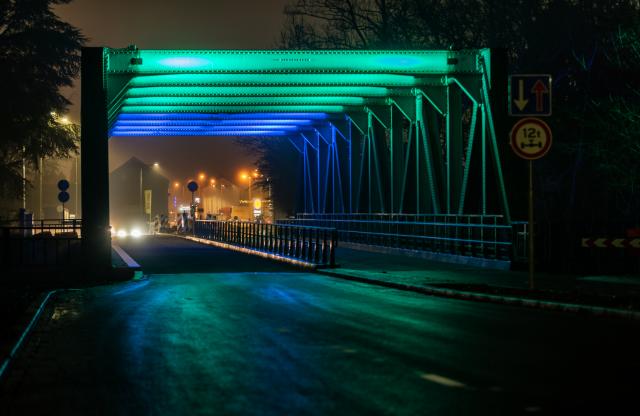Reconstruction of Locht completed
The work on the Locht is finished. After the reconstruction, the area has changed dramatically.
"With the redevelopment of the area, the different sections of De Locht have become more unified and there is more space for greenery. Also, the characteristic railroad bridge over the Miljoenenlijn is accessible to traffic again," Alderman Bejas (Traffic and Transportation) summarized the new situation.
New traffic situation with consideration for nature
The failure of the bridge over the railroad in late May 2018 prompted the municipality to review the traffic situation on the Locht and the layout of the area.
The result is a radical change in the connection of the Locht to the Hamstraat: the viaduct over the Hamstraat has been replaced by a direct connection from the Locht towards the Beitel. This also connects the provincial road directly to the road network towards Aachen.
Because of this connection, less traffic will use the Locht, which provided an opportunity to reconfigure the area between Hamstraat and Drievogelstraat as well. Here, in addition to the carriageway, a clear cycle path was created for both directions. A clear green structure has also been created.
Measures to protect the animal population were also implemented throughout the area, including the construction of a wildlife grid and a special badger tunnel.
Renovation of railroad bridge
An important part of the reconstruction of the Locht was the renovation of the railroad bridge. This was constructed in 1925 by the Dutch Railways as part of the Million Line. With its riveted steel construction, it forms a special and historical object within the area.
To make the bridge future-proof, the wooden bridge deck was replaced with a plastic deck. For this purpose, the steel structure in the roadway floor was also modified. The bridge is again accessible to motorized traffic and bicycle traffic. They each have their own lanes on the bridge. The bicycle lanes on the sides of the bridge have therefore been removed.
Light for the Locht
Because of its special character, the municipality decided to emphasize the bridge through a work of light art. The work "Light for the Locht" was designed by artist Diana Ramaekers. It is an airy lighting concept in which a cool color palette predominates: white, green, blue and violet. The colors emphasize the historic structure in an elegant and respectful way.
The artwork was inaugurated on Nov. 30. The light is synchronized with the street lights in the evening and turns off at midnight. Special caps were placed over the light fixtures to limit the scattering of light toward nature and homes.
